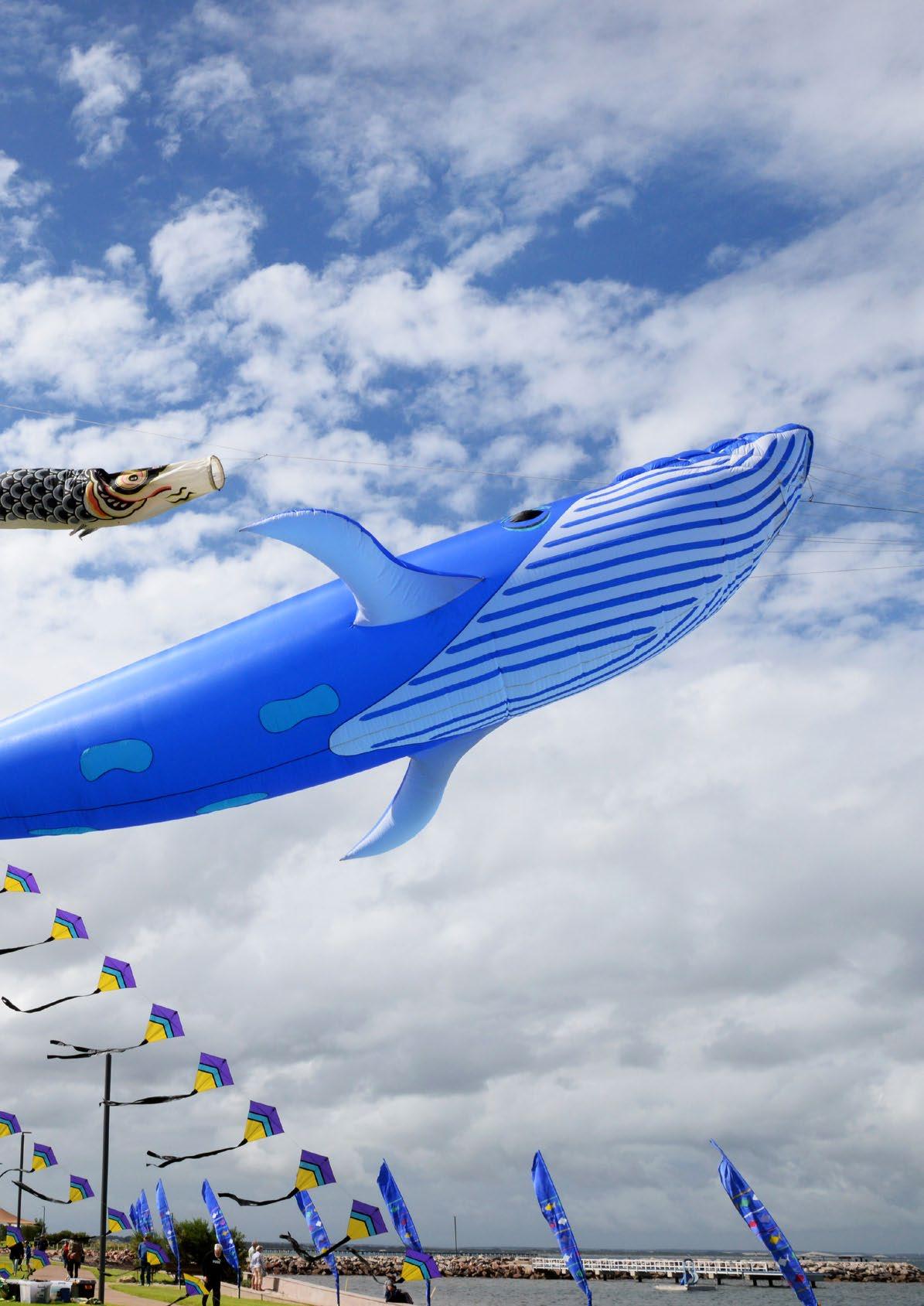
3 minute read
Appendix 1 –free or low-cost marketing initiatives
A complete marketing activity schedule will depend completely on the budget of the event, however there are several low-cost or free activities that AHOY Management suggests using to promote an icon event, which support advertising spend.
Promotion through owned media channels
Any event will have a set of owned channels which can be utilised for promotion. These will build up over time and have more impact as the event grows. It is suggested that all advertising points back to a centralised location where bookings take place and full event information is listed, such as an event website. A proposed list of owned media channels is outlined below.
Channel Avenues
Website
• Hero image
• Feature tiles
• Blog posts Event listings
• Itineraries for travel
• Cover photo
• Profile photo (remains the same)
• Timeline posts
• Facebook stories
• Facebook Events
• Posts within events
• Paid advertising
• Cover photo
• Feed
• Instagram stories
• Paid advertising
• Reels
• IGTV eDM
• Hero image
• Feature stories
• Links to accommodation/itineraries
• Sponsorship block
Printed collateral
Youtube
• Program
• Posters
• Café cards/flyers
• Uploaded videos
Curated video playlists
Utilise free marketing opportunities through partner media channels for stakeholder communication
Event partners provide free avenues to communicate with stakeholders about the proposed event. These are tourism partners and funding partners, who have a collective aim to see the event succeed. These avenues include industry newsletters for tourism organisations such as Esperance consumer channels, AGO and Tourism WA, as well as nontourism organisations such as the GEDC, Chambers of Commerce, Shire of Esperance and community groups.
Utilise free marketing opportunities through partner channels for consumer communication
Similarly, some of the above organisations also communicate directly with consumers through a variety of mediums that a new event can leverage. For example, AGO has a consumer newsletter, plus the opportunity to upload event listings onto their consumer website. In addition, all venues and participating producers should be encouraged to promote a collective event message through their own channels.
Leverage Destination Marketing Organisation (DMO) campaigns
DMOs and RTOs have their own annual marketing and activity calendar. Where possible, it makes sense for a regional event to leverage these opportunities for promotion. For example, Cabin Fever Festival is used as a hook for visitation to the Margaret River region in the ASW Winter Down South campaign. Campaigns of this nature historically include dedicated newsletters, campaign landing pages, advertising and social media promotion.
Public relations
Positive media stories, for example the involvement of community groups or high-profile art talent, will provide hooks to communicate about an icon event with media. It’s a key activity for many AHOY projects, as it can substantially leverage small advertising budgets. Good relationships with key media and personalised outreach can result in a lot of free coverage for an event.
Familiarisations
Familiarisations work effectively to educate relevant decision makers and media about events. In today’s media landscape, familiarisations can also result in immediate coverage of an event through social media or digital channels. Social media influencers offer real-time coverage of an event as it happens where as traditional media provide limited marketing exposure for an event in year one, however they have the potential to promote in future years.
Direct marketing to special interest groups
Special interest groups can become strong supporters of events that talk directly to their interests and fulfil demand for activities that are applicable to them. Special interest groups such as sports fans, wind surfers, guitar fans, coffee appreciation groups, hikers, Facebook community groups and other passionate people in relevant target markets can be approached to engage with the event.
Cross-promote or collaborate with other events and conferences in region
Rather than competing directly with other events in region, AHOY see benefit in exploring ways to work with other events to cross promote or collaborate. For example, tying in a consumer angle to a visiting conference, or bolstering NAIDOC week festivities with a visiting chef or workshop. Each event will benefit from cross promotion with a new database or audience.
Encourage participating businesses to promote the festival brand
By providing an easy-to-use brand toolkit and style guide, an event management team can make it easy for participating businesses and partners to promote the icon event brand alongside their own event. This ensures all involved parties promote the event with the same messaging.
In addition to participating businesses, this allows accommodation providers and other local industry to spread the message too.
Create advocates of the event through local representatives
By clearly communicating the vision and goal of the event and ensuring input from local industry, there’s an opportunity to create advocates of the event. This could be industry leaders such as local government staff, key tourism players, local members of parliament or locals at the cold face of consumers such as visitor centre staff.
Use cost effective town signage opportunities, such as entrance banners, LED screens and notice boards
Most community towns have community notice boards (digital or physical), truck stop banner signage, airport advertising or information bays that provide cost-effective advertising opportunities for community events.
List events on free digital event calendars
There are several consumer websites that allow events to post their details free of charge, so they show up in search results online. For example, Scoop Digital, the Australian Tourism Data Warehouse (ATDW), Perth is OK, AGO’s website, Eventfinda and Weekend Notes.






